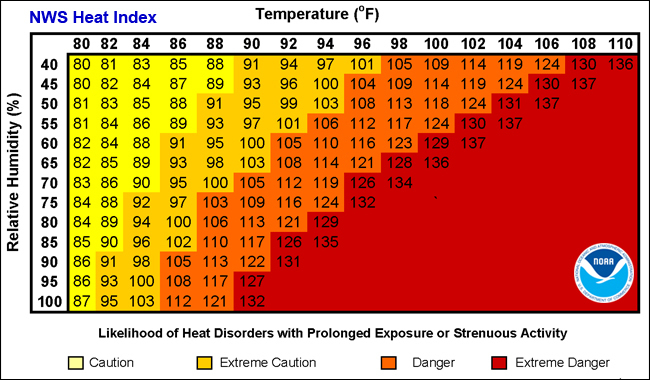
The Department of Labor has announced a new proposed rule to protect workers from extreme heat. This rule will require employers to evaluate heat hazards and take action if the heat index is at or above 80°. The chart below from the National Weather Service is a helpful tool for calculating heat index.
- At 80°, employers will be required to provide drinking water and break areas for workers.
- At 90°, employers must monitor workers for signs of heat illness and provide mandatory fifteen-minute breaks every two hours.
Employers will also be required to provide training and to develop and implement a Heat Injury and Illness Prevention Plan (HIIPP). HIIPP requirements will include: provisions for drinking water, rest breaks, and indoor heat control, procedures for responding to signs and symptoms of heat-related illnesses, the designation of a heat safety coordinator to “implement and monitor” the HIPP, and procedures to protect “new or returning workers” who are not acclimated to working in high heat conditions. HIIPPs must be reevaluated each year.
While this new rule is not yet final, it is important for us all to stay vigilant regarding worker safety in high heat. A few best practices for reducing heat risks include:
- Stay hydrated by drinking plenty of fluids. Don’t wait to drink until you feel thirsty.
- Drink sports drinks to replenish electrolytes lost through sweat.
- Avoid drinks with caffeine or alcohol during the night and weekends.
- Wear loose-fitting, lightweight, light-colored clothing. Avoid dark colors because they absorb the sun’s rays.
- Slow down, stay indoors and avoid strenuous exercise during the hottest part of the day if possible.
- Take frequent breaks if working outdoors.
- Wear sunscreen.
- Look out for symptoms in other employees, including implementing a buddy system to encourage workers to monitor each other.
- Be aware of personal risk factors for heat illness, which can include age, weight, medications, and previous experience with heat illness.

